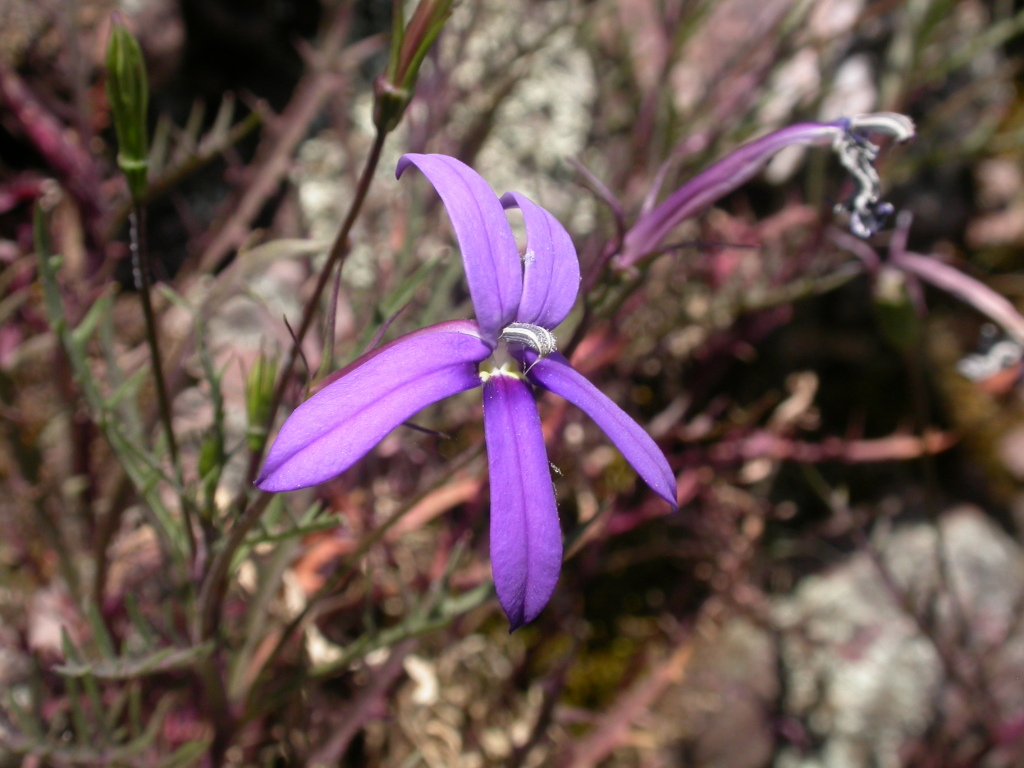Isotoma axillaris
Lindl. Showy IsotomeMinutely pubescent to glabrescent, decumbent to erect perennial, to c. 50 cm high; stems often maroon-tinged. Leaves ovate or obovate in outline, 1.5–12 cm long, to c. 6 cm wide, pinnatisect, lobes linear to linear-lanceolate, simple or toothed. Flowers solitary in upper axils; pedicels 3–17 cm long, minutely pubescent. Calyx-lobes 4.5–11 mm long; corolla 25–45 mm long; lobes subequal or upper 2 slightly narrower, bright blue-mauve (rarely white or pinkish), oblanceolate to lanceolate, 9–18 mm long, 2.2–6.5 mm wide, tube c. 17–24 mm long, very shortly slit; filaments 18–24 mm long, anther tube 4–6 mm long, seta of lower anthers c. 1.7–2.3 mm long. Capsule obconical, slightly compressed, 8–18 mm long; seeds c. cylindrical, 0.7–1 mm long, brown, alveoles c. isodiametric. Flowers and fruits most of year.
Wim, VRiv, MuF, GipP, Gold, CVU, NIS, EGL, EGU, HSF, HNF, MonT, VAlp. Also Qld, NSW. A herb of dry open rocky areas, often associated with granite outcrops.
Knox (2014) transferred Isotoma axillaris and allied species, I. petraea and I. anethifolia (neither in Victoria) to a new genus, Lithotoma. Although Lithotoma is recognisable morphologically (the tubular corolla and lithophytic habitat are distinctive), and forms a distinct group in a large molecular analysis, the group is nested within many other taxa still retained as Isotoma. Pending additional studies, the species is here retained in Isotoma.
Albrecht, D.E.; Walsh, N.G. (1999). Campanulaceae. In: Walsh, N.G.; Entwisle, T.J., Flora of Victoria Vol. 4, Cornaceae to Asteraceae, pp. 553–553. Inkata Press, Melbourne.
 Spinning
Spinning
